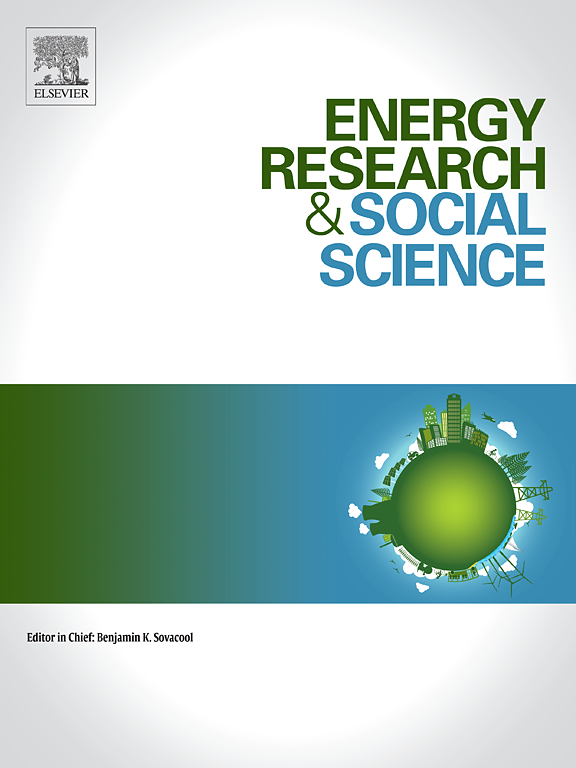Lights out, decisions on: How households adapt to power outages across regions and events
IF 6.9
2区 经济学
Q1 ENVIRONMENTAL STUDIES
引用次数: 0
Abstract
The capacity to adapt to disturbances is a distinguishing feature of a resilient system. A number of recent power outages have forced households to adapt to service disruptions. Households adapt to power outages in various ways, yet most existing research focuses on a single event in a specific location. This study expands the scope by analyzing four datasets to examine household adaptations across different events and locations: general outages in Los Angeles, California (CA); the 2022 North American winter storm in North Carolina (NC) and New York (NY); the 2021 Texas (TX) winter storm; and hypothetical future events in the first three locations. Using mixed logit models that integrate revealed preference (RP) and stated preference (SP) data, the study investigates household adaptation behavior across regions and events. The analysis addresses three key questions: (1) How common are different adaptations? (2) Which household adaptations tend to occur together, and which do not? (3) How do adaptations vary with household characteristics, outage duration, and geographic location? Results show that, as outage duration increases, people are more likely to consider multiple relocation adaptations and/or use a generator. Some household characteristics affect adaptation differently depending on location. For example, more prepared individuals are more likely to go to hotels in NC but less likely in CA. This study leverages mixed logit models in a novel way to estimate adaptation behavior during power outages. The models can estimate the percentage of people implementing adaptations with sufficient accuracy for practical purposes.
熄灯,决定:家庭如何适应跨地区和事件的停电
适应干扰的能力是弹性系统的显著特征。最近的几次停电迫使家庭适应服务中断。家庭以各种方式适应停电,但大多数现有研究都集中在特定地点的单一事件上。本研究通过分析四个数据集来扩大范围,以检查不同事件和地点的家庭适应情况:加利福尼亚州洛杉矶的一般停电;2022年北美北卡罗来纳州(NC)和纽约州(NY)冬季风暴;2021年德克萨斯州冬季风暴;以及前三个地点的假想未来事件。本研究使用混合logit模型,整合了显示偏好(RP)和陈述偏好(SP)数据,研究了不同地区和事件的家庭适应行为。该分析解决了三个关键问题:(1)不同的适应有多普遍?(2)哪些家庭适应倾向于同时发生,哪些不会?(3)适应如何随家庭特征、停电时间和地理位置而变化?结果表明,随着停电持续时间的增加,人们更有可能考虑多次搬迁适应和/或使用发电机。一些家庭特征对适应的影响因地点而异。例如,准备充分的个体更有可能去北卡罗来纳州的酒店,而不太可能去加利福尼亚州。本研究以一种新颖的方式利用混合logit模型来估计停电期间的适应行为。这些模型可以估计实施适应措施的人的百分比,具有足够的准确性。
本文章由计算机程序翻译,如有差异,请以英文原文为准。
求助全文
约1分钟内获得全文
求助全文
来源期刊

Energy Research & Social Science
ENVIRONMENTAL STUDIES-
CiteScore
14.00
自引率
16.40%
发文量
441
审稿时长
55 days
期刊介绍:
Energy Research & Social Science (ERSS) is a peer-reviewed international journal that publishes original research and review articles examining the relationship between energy systems and society. ERSS covers a range of topics revolving around the intersection of energy technologies, fuels, and resources on one side and social processes and influences - including communities of energy users, people affected by energy production, social institutions, customs, traditions, behaviors, and policies - on the other. Put another way, ERSS investigates the social system surrounding energy technology and hardware. ERSS is relevant for energy practitioners, researchers interested in the social aspects of energy production or use, and policymakers.
Energy Research & Social Science (ERSS) provides an interdisciplinary forum to discuss how social and technical issues related to energy production and consumption interact. Energy production, distribution, and consumption all have both technical and human components, and the latter involves the human causes and consequences of energy-related activities and processes as well as social structures that shape how people interact with energy systems. Energy analysis, therefore, needs to look beyond the dimensions of technology and economics to include these social and human elements.
 求助内容:
求助内容: 应助结果提醒方式:
应助结果提醒方式:


